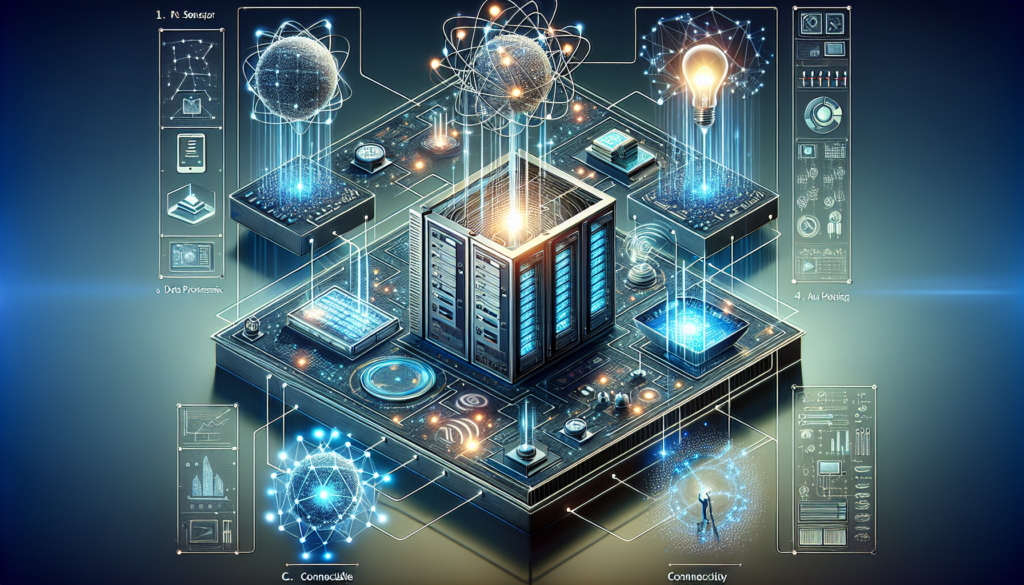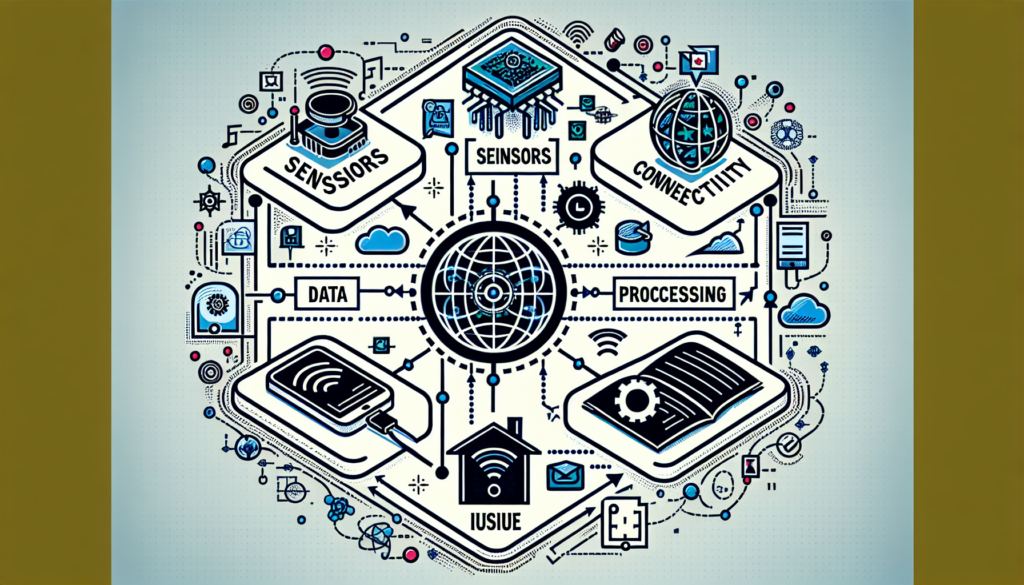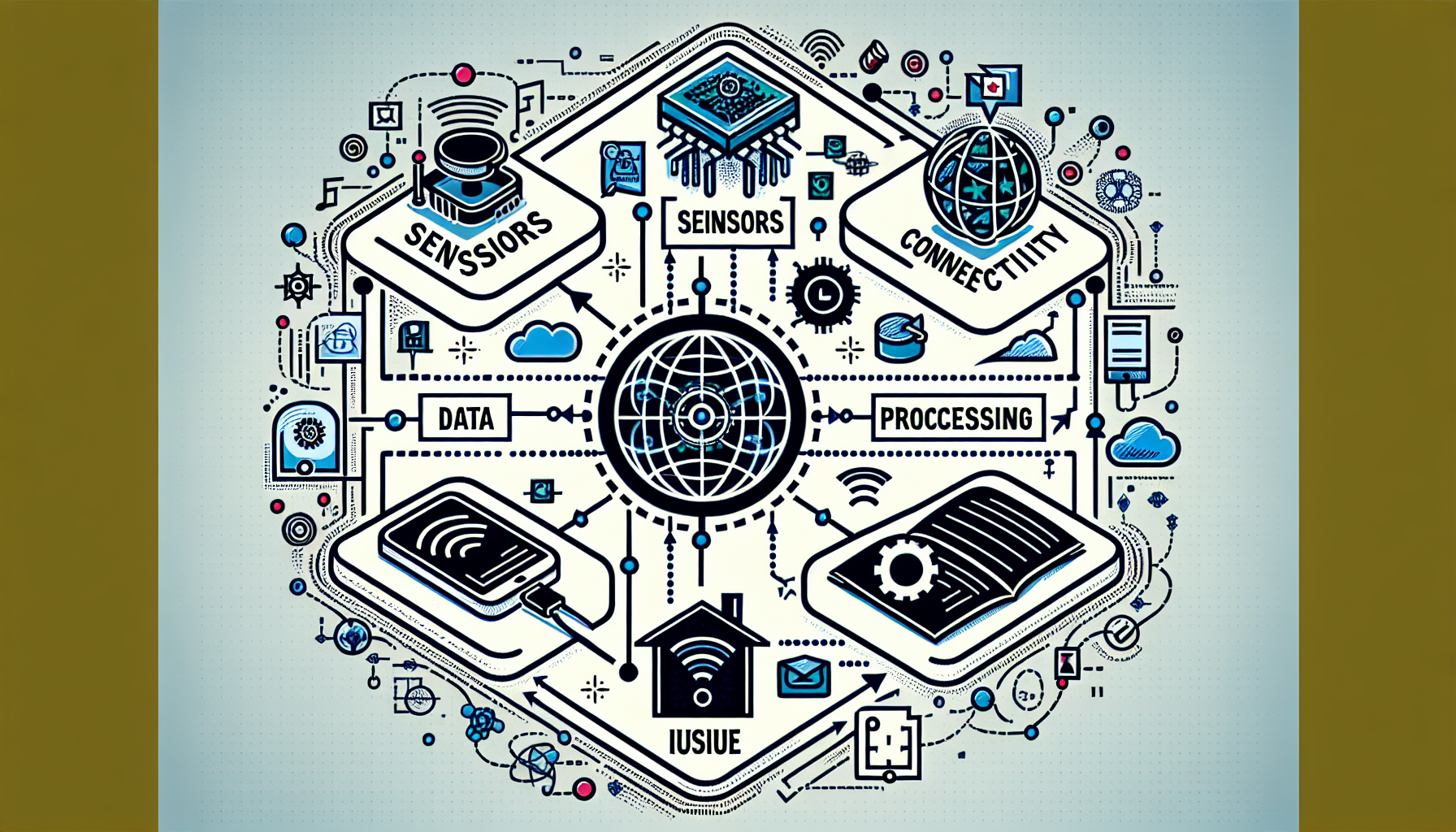You’re about to discover the 4 main components that make up an IoT system. In this article, we’ll explore these essential elements that work together to bring the Internet of Things to life. From sensors that gather data, to the network that connects devices, to the cloud where information is stored and processed, and finally to the user interface that allows us to interact with the system – each component plays a crucial role in creating a seamless and efficient IoT experience. So, let’s dive right in and unravel the inner workings of an IoT system!
Hardware
Sensors
Sensors are a fundamental component of any IoT system. These devices are responsible for collecting data from the physical environment. There are various types of sensors available, each designed to measure specific variables such as temperature, humidity, motion, light, and more. The data gathered by sensors serves as the input for the IoT system, providing valuable insights and enabling actions to be taken based on the information received. Without sensors, an IoT system would be unable to interact with and understand its surroundings.
Actuators
Actuators are the counterpart to sensors in an IoT system. While sensors collect data from the physical environment, actuators are responsible for taking actions based on that information. Actuators enable an IoT system to interact with the physical world, allowing it to make changes, control devices, and perform specific tasks. Examples of actuators include motors, valves, switches, and lights. These devices receive instructions from the IoT system and carry out the necessary actions. Actuators are crucial for turning data into real-world impact and are an essential component of any IoT system.
Connectivity
Wi-Fi
Wi-Fi connectivity is a widely used method for connecting IoT devices to the internet. It allows for high-speed data transmission, making it suitable for applications that require real-time data exchange. With Wi-Fi, IoT devices can connect to a local network or the internet, enabling seamless communication between devices and cloud platforms. Wi-Fi is widely available and relatively easy to set up, making it a popular choice for many IoT applications. It provides a reliable connection for data transfer and ensures that IoT devices can be accessed remotely.
Bluetooth
Bluetooth technology is another common method of connectivity for IoT devices. It enables short-range wireless communication between devices, making it ideal for applications that require proximity or low power consumption. Bluetooth is often used for connecting smartphones to IoT devices, allowing for convenient control and monitoring. It is commonly found in wearable devices, smart home systems, and healthcare applications. Bluetooth provides reliable and secure data transmission, making it a valuable connectivity option for IoT devices.
Cellular
Cellular connectivity utilizes cellular networks to connect IoT devices to the internet. This method is particularly useful in situations where Wi-Fi or Bluetooth may not be available or feasible. Cellular connectivity allows for wide-area coverage, making it suitable for applications that require IoT devices to be deployed in remote or mobile locations. It provides a reliable connection, ensuring that IoT devices can stay connected and transmit data even in areas with limited infrastructure. Cellular connectivity is often used in industries such as agriculture, transportation, and utilities.
Ethernet
Ethernet is a wired method of connectivity for IoT devices. It uses Ethernet cables to establish a physical connection between devices and a local network or the internet. Ethernet offers high-speed and reliable communication, making it suitable for applications where data transfer is critical. It is commonly used in industrial settings, where robust and stable connections are required for real-time monitoring and control. Ethernet connectivity provides a secure and stable connection for IoT devices, allowing for efficient data exchange and integration into existing networks.

Data Management
Data Acquisition
Data acquisition is the process of collecting and gathering data from various sources, such as sensors, devices, and machines. In an IoT system, data acquisition is crucial for obtaining real-time and accurate information about the physical environment. This process involves capturing data from sensors and other devices, converting it into a digital format, and ensuring its quality and reliability. Data acquisition systems often include analog-to-digital converters, which convert analog signals from sensors into digital data that can be processed by the IoT system. Data acquisition is the first step in the data management process, providing the foundation for data analysis and decision-making.
Data Processing
Data processing is the next step in managing data in an IoT system. Once data is acquired, it needs to be processed and transformed into meaningful information. This involves various tasks, such as filtering, aggregating, analyzing, and visualizing the collected data. Data processing algorithms and techniques are employed to extract valuable insights, identify patterns, and make informed decisions based on the data. Data processing in an IoT system can be performed locally on edge devices or in the cloud, depending on the specific requirements of the application. Efficient data processing ensures that the IoT system can derive actionable intelligence from the collected data.
Data Storage
Data storage is an essential component of data management in an IoT system. As IoT devices generate large volumes of data, effective storage solutions must be in place to store and manage this information. Depending on the application and data requirements, various storage options are available, including databases, data warehouses, and cloud storage. Data storage systems should be scalable, reliable, and secure to accommodate the growing data volumes and ensure data integrity. Additionally, data storage solutions should support efficient data retrieval and enable easy access to historical data for analysis, reporting, and decision-making purposes.
Software
Operating System
In the context of an IoT system, the operating system (OS) refers to the software that manages and controls the operation of IoT devices. The OS plays a crucial role in providing a platform for running applications, managing resources, and facilitating communication between hardware components. IoT-specific operating systems are designed to be lightweight and energy-efficient, as many IoT devices operate on limited power sources. These operating systems often include features such as real-time scheduling, security mechanisms, and support for various communication protocols. An appropriate operating system ensures that the IoT devices can function optimally and reliably within the IoT ecosystem.
Application Software
Application software is responsible for implementing the specific functionalities and features of an IoT system. This software layer typically consists of software applications developed for specific use cases and domains. Application software in an IoT system can include mobile apps, web-based interfaces, analytics tools, and control systems. These applications enable users to interact with the IoT system, monitor device status, receive notifications, and control IoT devices remotely. Application software is crucial for providing the end-user with a seamless and intuitive interface to manage and interact with the IoT system effectively.
Firmware
Firmware refers to the software that is embedded in the hardware devices themselves. It provides low-level control and functionality for the hardware components of an IoT system. Firmware is responsible for managing the device’s hardware, executing instructions, and coordinating communication with other devices and the network. Firmware updates may be necessary to add new features, improve performance, or address security vulnerabilities. Firmware plays a critical role in ensuring the reliable and efficient operation of IoT devices, and regular maintenance and updates are essential to keep the IoT system secure and up to date.
In conclusion, the main components of an IoT system include hardware (sensors and actuators), connectivity options (Wi-Fi, Bluetooth, cellular, and Ethernet), data management (data acquisition, data processing, and data storage), and software (operating system, application software, and firmware). These components work together to enable the collection, processing, and analysis of data from the physical environment, facilitating decision-making and providing valuable insights for various applications and industries. Understanding these components is key to designing and implementing effective IoT systems that harness the full potential of connected devices and the digital transformation brought about by the Internet of Things.

